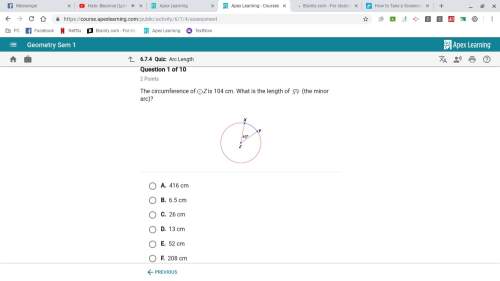
Mathematics, 02.10.2019 02:30 fraven1819
Show that [lg(n+ 1)] =[lg n] + 1 for integers n≥1. hint: group values of n into ranges of theform (2^(k)) ≤ n < (2^(k+1))

Answers: 2


Another question on Mathematics

Mathematics, 21.06.2019 13:20
Which equation and solution can be used to solve this problem? thirteen less than a number is sixteen. 13-n=16: add 13 to both sides. the answer is 29. n+13=16: subtract 13 from both sides. the answer is 3. n+16=13 subtract 13 from both sides. the answer is 3. n-13=16: add 13 to both sides. the answer is 29.
Answers: 1

Mathematics, 21.06.2019 15:20
Which is the equation of an ellipse with directrices at x = ±4 and foci at (2, 0) and (−2, 0)?
Answers: 3

Mathematics, 21.06.2019 20:10
What additional information could be used to prove abc =mqr using sas? check all that apply.
Answers: 1

Mathematics, 21.06.2019 21:30
Which of the following shows the length of the third side, in inches, of the triangle below
Answers: 2
You know the right answer?
Show that [lg(n+ 1)] =[lg n] + 1 for integers n≥1. hint: group values of n into ranges of theform (...
Questions



History, 24.04.2021 03:20







Social Studies, 24.04.2021 03:20


Mathematics, 24.04.2021 03:20

Mathematics, 24.04.2021 03:20

Computers and Technology, 24.04.2021 03:20

Chemistry, 24.04.2021 03:20

History, 24.04.2021 03:20




Mathematics, 24.04.2021 03:20




